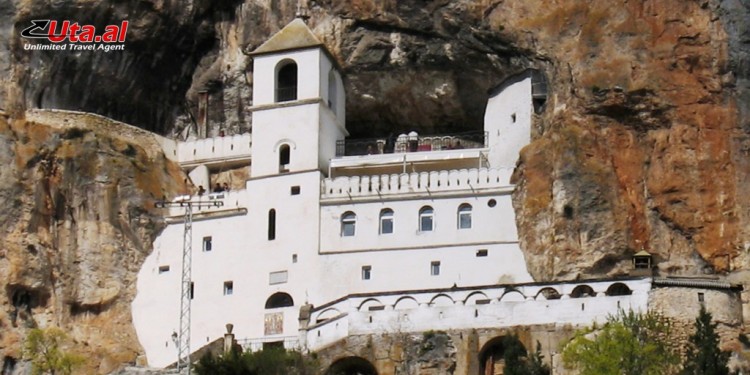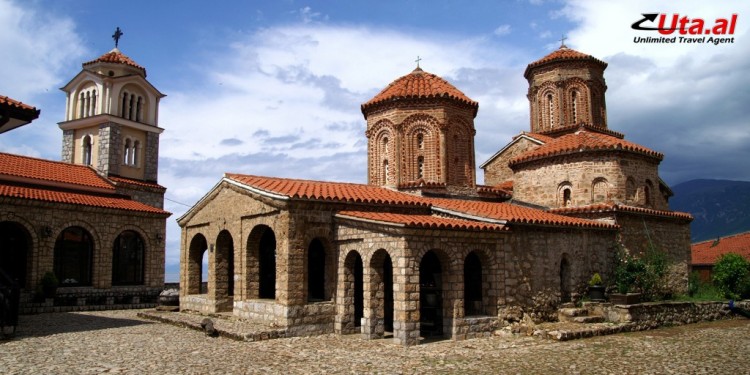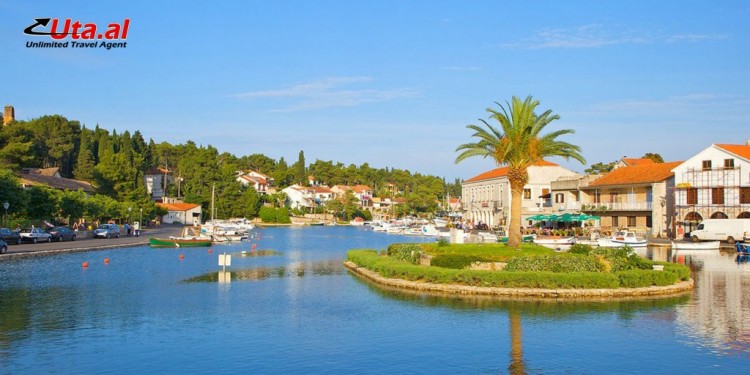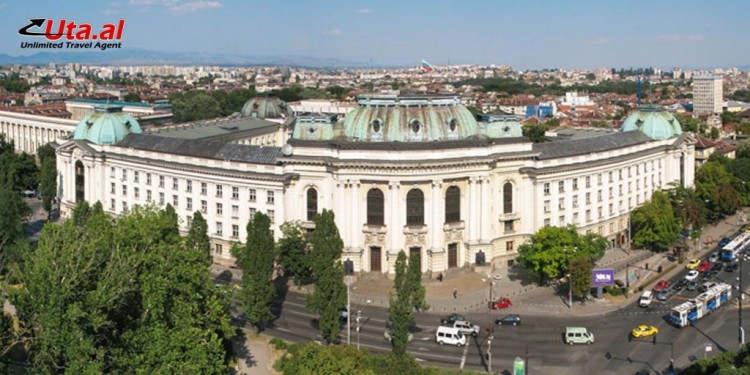Balkans small group tour
Fortunately, those days have long passed and the Balkan nations are charming visitors with their dramatic architecture, vibrant art scene and vivid scenery. Togather we will discover the Balkans for yourself during this exciting adventure tour where you can discover the diversity of the Balkans from bustling cities packed with history to sundrenched islands fringed by white sand beaches and turquoise seas.
Day I
The first day of your tour is simply an arrival day with no pre-organised activities. In order to allow time to relax and see some of the sights you may wish to add pre tour accommodation. On arrival please ask at the reception for information on when the pre departure meeting will be held.Bulgaria’s capital Sofia offers a wealth of cultural entertainment, including Byzantine churches, museums full of ancient archaeological treasures, towering monuments and numerous mineral baths adjacent to the magnificent Mount Vitosha. Laid back and cosmopolitan, Sofia offers a thriving and diverse street life, including open-air cafés, busy markets such as the famous Ladies’ Market, rattling trams and buskers all adding to the ambience. At the foothills of Mount Vitosha about 8 kilometres from the city centre you can visit the 900 year-old Boyana Church, considered among the masterpieces of medieval European painting, which features murals and frescoes dating back to 1259 AD, medieval architecture and monumental art. Also at the base of Mt. Vitosha is the splendid National History Museum, with antiques dating back to the Thracian period.Sofia also offers many beautiful gardens to relax in, such as Boris Gardens and the South Park, which starts just behind the Palace of Culture.
Optional Excursions:
- > Ethnographical Museum – BGN 3
- > National Art Gallery – BGN 6
- > Alexander Nevski Cathedral – free
- > St Alexander Nevski Crypt – BGN 4
- > National Museum of History – BGN 10
Day II
In Skopje, Macedonia’s capital, you can enjoy 2,000 years of history spanning Oriental and Western cultures, neatly divided by the Vardar River through the centre of the city. Skopje has many historical monuments including the Kale Fortress dating back to the 6th century, the Daud Paša Amam, a 15th century bathhouse now converted into the city art gallery. You can also see the Mustafa-pasha’s mosque, the 16th century Clock Tower and the Kamen Most (Stone Bridge) over the Vardar River.
Optional Excursions:
> Mother Teresa statue and memorial room – free
> National Museum & Icon Gallery – MKD 50
Day III – IV
We travel on to the gorgeous lake side town of Ohrid, perching on the Macedonia/Albania border. This unassuming, picturesque settlement has been the setting of thousands of years of human history and the ancient churches, fortress walls, bazaars and old quarters are testimony to its past. Lake Ohrid itself is Europe’s oldest lake having formed over three millions years ago. Wander the streets and squares of its compact centre before hiking up to the ancient walled fortress that overlooks the day to day life of the city and explore the famous old churches, monasteries and basilicas.
Included Excursions:
Visit Lake Ohrid
Optional Excursions:
- > Sveta Bogorodica Bolnicka, originally a hospital church where plague victims were quarantined – free of charge
- > Sveti Nikola Bolnicki – free of charge
- > National Museum – MKD 100
- > Samoils Fortress – MKD 50
- > Sveta Bogorodica Perivlepta, a 13th century painted church – MKD 100
- > St Pantelejmon monastery – free
- > Boat trip around Lake Ohrid – €15 per person (based on 6-8 people)
Day V
We then head to Tirana, the trendy capital and largest city of Albania, which has transformed from a grey, dismal ex-communist city, isolated by the regime until the 1990s, to a colourful capital buzzing with life. While the city has a long history, you can enjoy its modern outlook, with fashionable bars, and wander boulevards lined with relics of the city’s Ottoman, clubs and boutiques, Italian and communist past. Tirana’s massive main square, Sheshi Skënderbej, is bordered by the National History Museum, the Palace of Culture, the National Bank, the Et’hem Bey Mosque and Skanderbeg’s statue. A short bus ride from the centre city, the Martyr’s Cemetery offers marvellous panoramic views over the city. If time allows we may have an opportunity for a morning trip to Kruja.
Included Excursions:
Kruja
Optional Excursions:
> National Art Gallery – Lek 200
> National Museum of History – Lek 200
> Muzeu Onufri (Onufri museum) – Lek 200
> Muzeu Etnografik – Lek 200
> Sky Bar & Restaurant – €2
Day VI – VII
Our next visit is to the seaside town of Budva in Montenegro. Budva (not to be confused with the Czech beer Budvar) is 2,500 years old, one of the oldest and most popular settlements on the Adriatic coast of Montenegro. This vibrant seaside town is well known for its sandy beaches, historic old town, diverse nightlife, and beautiful examples of Mediterranean architecture.We will take a day trip to the picturesque Kotor, a walled city nestled at the bottom of Europe’s deepest fjord. Stari Grad, the old town, is a UNESCO World Heritage Site, with a tricky labyrinth of cobbled alleys, squares and ancient churches, including St Tryphon’s Cathedral built in 1166. The mountains provide a dramatic backdrop to this beautiful town as they come down steeply, almost to the waterfront. You could spend the day drinking espresso in the shade of the medieval walls watching people go by. You can climb the walls of the ancient fort of Sveti Ivan which spans some 4.5 kilometres above the city on almost vertical cliffs. Your efforts will be rewarded by an excellent view of Kotor and the bay.We will visit Ostrog Monastery, clinging precariously to an almost vertical cliff face. Ostrog Monastery is a famous Serbian Orthodox Church built in the 17th century to honour one of the four Montenegrin saints, Vasilije Jovanovic, who fled here from the Turks in 1665. The greatest spiritual centre of Montenegro and the most visited Orthodox shrine in the Balkans, the sanctuary still attracts pilgrims who hope to cure their illnesses and other problems by praying over his remains. You may also have time to take in the Old Royal Capital of Cetinje, visiting the Monastery and many museums showcasing some of Montenegro’s prosperous past.
Included Excursions:
> Kotor
> Ostrog Monastery
> Optional Excursions Budva Museum – €3
> Discover the picturesque old town – free
> Boka Kotorska (Bay of Kotor), a full day trip of Mamula Island, Zanice beach and Blue cave – price TBA
Day VIII – IX
Crossing the border into the ‘heart-shaped land’ of Bosnia and Herzegovina we visit the capital Sarajevo, a fascinating mixture of western and eastern cultures. Known as the ‘Jerusalem of Europe’, the city was once famous for its religious diversity, with people of Islamic, Orthodox Christian, Catholic and Jewish faiths coexisting relatively peacefully for centuries. The atmosphere of calm and tolerance changed dramatically when violence erupted in the mid 1990s and the city underwent the longest siege in modern military history during the Yugoslav War.Today the city is largely recovered and is packed with fascinating museums bazaars, markets and bridges. During your time here you could explore the cobbled streets, mosques and Oriental style shops of the Old Town, visit the Bosnian Historical Museum to learn about the siege of Sarajevo and visit the Sarajevo Tunnel Museum, the tunnel which was used to ferry supplies into the besieged city during the conflict, next to the airport. For history buffs a must see is the “Latin Bridge” spanning the river in the down-town area. The bridge bears a plaque commemorating the assassination of Archduke of the Austro-Hungarian Empire, Franz Ferdinand, the event that sparked the beginning of World War I. Today the city is largely recovered and is packed with fascinating museums
Optional Excursions:
> Tunnel Museum, the entrance to the tunnel used during the Bosnian War – BAM 30
> Jewish Museum – BAM 2
> Jewish Tour – BAM 32 every day at 2pm
> Communism Tour – BAM 38 (minimum 2 people)
> Orthodox Church Museum – free but donations welcome
> History Museum – BAM 1
> Walking Tour of the Old City (Bascarsija) – BAM 20
Day X
Widely felt to be the prettiest city in Bosnia and Herzegovina Mostar is situated on the Neretva river and is the fifth-largest city in the country. Mostar was named after the bridge keepers (natively: mostari) who kept the Stari Most (Old Bridge) over Neretva river. The city is particularly famous for this beautiful single span bridge, Stari Most, which collapsed into the Neretva River during the Yugoslav War in 1993. Built in 1556 by the Ottoman ruler Suleiman the Great, Stari Most had been a globally recognised landmark and a national symbol for Bosnia-Herzegovina. It had survived centuries of conflict including both world wars and proved that, whatever happened, the mainly Christian west bank and mainly Muslim east remained united. The destruction of the bridge was a huge blow to the local people, but in 2004 the bridge was rebuilt as a replica of the original using pieces of masonry salvaged from the riverbed. Its reopening represented the hope that Muslims, Croats and Serbs could once again live side by side and that Mostar would be healed after a decade of ethnic division.
Optional Excursions:
> Koski Mehmed Pasha Mosque – €2.5 (includes minaret)
> Karad-zozbegova Mosque – €2.5 (includes minaret)
> Turkish House – BAM 2
> Memorial Museum of Herzegovina – BAM 1.5
Day XI – XII
Into the south of Croatia, we visit the ‘Pearl of the Adriatic’, the UNESCO World Heritage listed walled city of Dubrovnik.With a paved town centre enclosed in fortress-like 13th century stone walls, the city is easy to explore on foot and is full of character. A great start to your exploration of Dubrovnik could be with a walk around the city walls. Stretching almost 2 kilometres around the old town, the walls offer stunning rooftop and city views out to the turquoise blue Adriatic Sea. Founded in the 7th century, for a time in its glorious past the city was a serious rival for Venice in terms of maritime trade. It is hard to believe now but in 1991, two out of every three buildings were damaged during the bombardment of the Yugoslav War. Since then the buildings and walls have been painstakingly restored to pristine condition and represents one of the most beautiful and solid fortress systems on the Mediterranean. There are several other historic attractions worth a visit near the main street (Stradun), such as the 14th century Franciscan monastery which houses a treasury full of sacred art and artefacts, as well as one of the oldest continually working pharmacies in the world, dating back to 1317.
Included Excursions:
Dubrovnik City Wall
Optional Excursions:
> Museum of the Orthodox Church – HRK 10
> Synagogue – HRK 10 • 14th century Dominican Monastery – HRK 15
> Rector’s Palace – HRK 20
> Lokrum Island – ferry HRK 80
> Half day kayaking – €40
> Scuba diving – one boat dive €46, two dives €83, wreck dive €55
> Dubrovnik 24 hour City Card – HRK 130
> Cable car – HRK 97 return
Day XIII
Heading now out to the islands of Croatia, we hop to Marco Polo’s birthplace, sunny Korcula which offers numerous secluded beaches and bays with stunning views over the Adriatic. The main town on the island is also called Korcula, featuring medieval walls and forts as well as many fine museums housing priceless works of art. While you’re visiting the island you may have the chance to see a Moreska dance, a spectacular combat dance performed with swords.
Optional Excursions:
> Korcula Moreska Sword Dance – HRK 100
> Marco Polo House where the explorer was believed to be born – HRK 25
Day XIV – XV
Boasting more sunshine hours than any of the other sun-soaked Dalmatian islands, Hvar Island offers fairytale Venetian architecture, a waterfront promenade fringed by palm trees and centuries old walls. With all of this and an historic fortress overlooking it all, it’s no wonder picturesque Hvar Town is considered a chic destination for the rich and famous, and you may be lucky enough to see one or two familiar faces here.Built by the Venetian Doges in the 13th century, Hvar Town is a maze of cobblestone streets and sunny squares bordered by al fresco cafés and restaurants. The most important sights such as Cathedral of St Stephen, Clock Tower and the Arsenal flank the main square, while a picturesque expanse of terracotta-roofed houses and tiny streets cover the hill behind. One of the simplest pleasures on the island is to take part in the evening stroll around the town and take in the views – don’t forget to buy an ice cream from a local slasticarna, the Croatian equivalent of the Italian gelateria. You may also enjoy a stroll around the harbour, which is often filled with multimillion-dollar yachts, a reflection of the lavish lifestyles of the wealthy visitors to the island. You will have time to explore smaller villages of Stari Grad, Jelsa, taking in lavender fields, Vrboska and Brusje, wineries, eco villages and experiencing the local culture.
Optional Excursions:
> Franciscan Monastery Museum – HRK 25
> Return bus to Stari Grad, one of the oldest towns in Croatia – HRK 54
> Municipal Theatre and Art Gallery – HRK 20
> Scuba diving – €35 shore dive. Boat dives will cost approximately €46 for one dive or €83 for two dives. For certified divers only.
Day XVI
Back on the mainland, we head to Split but not before we stop in for a visit to the Venetian-style port town of Trogir. Dating back to the 13th century, the beautifully preserved medieval centre was listed as a UNESCO World Heritage Site in 1997. As you meander through its tiny streets, you’ll discover that this charming port town has more than its share of cultural heritage, with palaces, Romanesque churches, and Renaissance and Baroque buildings from Venetian times in abundance. You’ll also discover plenty of restaurants and shops hidden away in various nooks and crannies. Enjoy a walk along the seaside promenade and wander down to see the harbour.We then drive on to the coastal city of Split, built around the remains of the Diocletian Palace which dates back to the Roman era. Wander inside and take in Peristil Square where you can see an original Egyptian sphinx which was brought from Egypt by Roman emperor Diocletian. Another sphinx can be found near St John’s Church, which was originally a Roman temple. Take a tour of the Diocletian Palace or climb the campanile bell tower next to the palace’s mausoleum for spectacular views from the top.If you want to relax there are plenty of al fresco bars and restaurants to choose from along the seafront, as well as gelati bars and cheaper pizzerias off the main roads. There is plenty of delicious Italian-influenced local cuisine to choose from, often at very reasonable prices. If you want to hang out with the locals, head for the beach at Bacvice. There are many cafés and places to eat icecream and it’s a great place to get a feeling of ‘real’ Croatia as the vast majority of people who go there are from Split.Included Excursions: Diocletian Palace Tour
Optional Excursions:
> The City Museum of Split – HRK 20
> Split tour – €72 (plus €5 for entry to basement of Diocletan’s Palace and €2 for Jupiter’s Palace)
> Bus to Trogir – HRK 21
> Cathedral of St Lovro in Trogir – HRK 25 (including cathedral tower)
> Church of St John the Baptist in Trogir – free
Day XVII
Continuing our diverse journey through Croatia, our next stop is to explore Plitvice National Park, a beautiful reserve featuring 16 spectacular blue lakes surrounded by forest.The lakes are linked by natural dams which create beautiful low level waterfalls joining one lake to another. Due to the varying mixtures of minerals in the water, each lake has a distinctive colour ranging from azure to green, grey or blue. The surrounding forest features a mix of beech, spruce, and fir trees and is home to 126 species of birds and a number of rare animals including European brown bears, wolves, eagles, wild cats and eagles. Due to its natural beauty and significance, a 78 metre high, the park was inscribed on the UNESCO World Heritage list in 1979. The entire park can be seen in about 4 hours and you can get beautiful views from almost any vantage point. Don’t miss the Veliki Slap, 50 metre wide waterfall surrounded by boulders – a great place for photos.
Included Excursions:
> Plitvice Lakes National Park
Day XVIII
After our time exploring the national park we continue to the Croatian capital of Zagreb, a vibrant cultural centre with a long history, located on the crossroads of important routes between the Adriatic coast and Central Europe. Originally established as two fortresses on two neighbouring hills in medieval times, the city has withstood numerous invasions, earthquakes and political upheaval to grow into a prosperous centre of industry. In your free time you can explore Ban Jelacic Square surrounded by grand buildings or visit the Zagreb Cathedral with its fountain of Madonna surrounded by golden angels. You can visit colourful open-air markets such as Dolac Market and discover the historic Upper Town with its palaces, monasteries and churches from the 17th and 18th centuries. There are also dozens of museums, theatres, galleries and art collections to visit, or take a tram to the medieval fortress of Medvedgrad on the southern side of nearby Mount Medvednica for beautiful views over the city., including Museum Mimara. Another interesting museum to see is the City of Zagreb Museum covering every facet of its long history. You could take a picnic to Maksimir Park about 3 kilometres from the city centre.
Optional Excursions:
> Lotrscak Tower – HRK 10
> Funicular, constructed in 1888, it connects the lower and upper towns – HRK 3
> Museum of the city of Zagreb – HRK 20
> Ethnographical Museum – HRK 15
> Strossmayer Gallery of Old Masters – HRK 10
> Archaeological Museum – HRK 20
> Budget Walking Tour – €13
Day XIX
Your adventure of a lifetime comes to an end today. If you have a late flight or have lengthened your stay by adding post tour accommodation you will have more time to explore the sights.
TOUR LOCATION






Accomodation0%
Destination0%
Meals0%
Overall0%
Transport0%
Value For Money0%